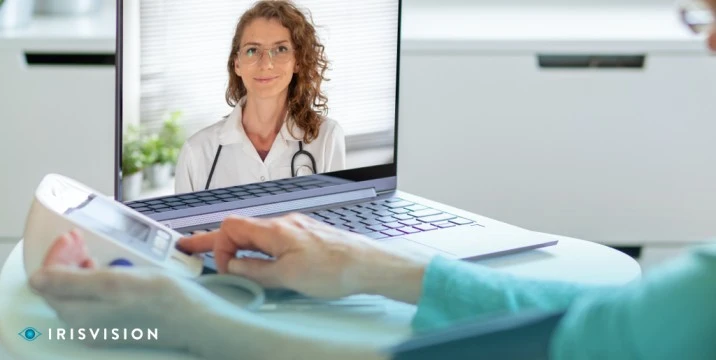
#LIVE2.0 #Review
Vision loss or low vision not only affects the person diagnosed with it but has a proportional effect on the lives of the people that surround the individual. It changes the most basic aspects of a person’s daily life as it directly affects independence, mobility, mental health, social life, employment, etc. In some cases, the injury caused to the eye or optic nerve can be treated while also reducing the effects of the injury or the eye diseases but in other cases the damage caused can be irreversible. In the effort to mitigate risks of further harm or damage, frequent visits to an ophthalmologist are required to take measures such as low vision rehabilitation.
Almost 12 million people aged 40 years and above in the US suffer from vision impairment, including 1 million legally blind, 3 million with vision impairment after correction, and 8 million who have vision impairment due to uncorrected refractive error.
The United States Centers for Disease Control and Prevention
Apart from the medical expenses related to consultations, medications, there are other costs and physical barriers associated with frequent checkups, consultations, eye examinations i.e. an individual with vision loss or low vision will require more time to get ready and dressed, will also require a companion and/or endure travel/commute costs, etc.
But with telerehabilitation training and vision assistive equipment (VAE) – visually impaired people can overcome all such barriers through the use of remote, internet-based consultation, diagnosis, and treatment.
Telehealth applications have gained popularity around the globe due to the advent of innovative telecommunications technologies that provide ease of use and greater freedom for clinicians as well as patients. Medical services such as consultation through video conferencing, remote testing, and updating existing technologies through the application of research in areas such as low vision rehabilitation and others have provided a new paradigm for healthcare services.
Low vision rehabilitation through the use of clinical video telehealth is the most efficient way of providing healthcare services to the vision-impaired community. The list of benefits presented by the digital approach overweighs those provided by in-person consultations and appointments. It starts by eliminating any physical limitations or hurdles that a vision-impaired individual must go through to reach the nearest medical facility, it further ensures the wellbeing and safety of the patient, increases access for patients residing in remote areas, saves time, and decreases travel costs.
Though the purposes of online vision tests are not to completely replace comprehensive eye examinations, it presents an easy-to-use, self-reliant system that can help you with a quick vision assessment by an expert. There are several methods of conducting and measuring visual acuity tests, the most effective tests take into account the patient’s screen size displaying the vision test as well as the distance of the individual from the screen to improve the accuracy of the tests.
Much of the telehealth services have already been trailed, tested, and validated as an acceptable and effective strategy to provide basic healthcare to the most marginalized segments of the population. One such successful case study is that of the U.S. Department of Veterans Affairs (VA) Blind Rehabilitation Services provided federal funding to VA low vision clinics across the U.S to purchase telehealth equipment directed towards veterans residing in remote locations of the country – which resulted in improved access to care and increased patient satisfaction (U.S. Department of Veterans Affairs, 2015).

Though the technology aspect in the telehealth domain is bound to go through upgrades for further improvements in user experience for the service provider, there are other steps required to equip the low vision individuals with the information necessary to ensure a smooth transition from an in-person clinical visit to remote patient monitoring and treatment. These steps include orientation training, user manuals, technical support for low vision, vision impaired, and individuals diagnosed with uncorrectable vision loss due to eye diseases i.e. glaucoma, macular degeneration, and diabetic retinopathy.
Removing technical barriers for low vision rehabilitation is imperative since the majority of the vision-impaired community comprises the elderly segment, including those residing in remote areas. Here are a few steps to make the experience more user-friendly:
Preparing Patients with Technical Guidance
Conducting a physical orientation session with low vision patients to guide them on the necessary steps needed to benefit from remote vision care starting from how to make an appointment, to how to share reports and tests with the healthcare professional. Tutorial videos can be a fun useful tool that patients can access anytime.
A dedicated technical support team can be a great support mechanism not just for the vision-impaired community but also for the vision care specialists and ophthalmologists when confronted with a technical glitch or issue.
In the United States, adults aged 40 years and older are at a greater risk of being diagnosed with an eye disease or condition as reported by The United States Centers for Disease Control and Prevention.With the increase in diseases like diabetic retinopathy, more people with low vision will likely increase over time. Telehealth is one such effective measure that can provide an increased number of patients with vision care services while reducing travel costs and saving time for the patient and service provider. All the stakeholders in society ranging from the general public, local administration, and healthcare providers must take relevant steps to make this transition as smooth as possible.
Support
See and Connect Today!
IrisVision Global, Inc.
5994 W. Las Positas Blvd, Suite 101
Pleasanton, CA 94588
Email: [email protected]
Support: +1 855 207 6665
Support
See and Connect Today!
IrisVision Global, Inc.
5994 W. Las Positas Blvd, Suite 101
Pleasanton, CA 94588
USA Email: [email protected]
Support: +1 855 207 6665
Support
See and Connect Today!
IrisVision Global, Inc.
5994 W. Las Positas Blvd, Suite 101
Pleasanton, CA 94588
Email: [email protected]
Support: +1 855 207 6665